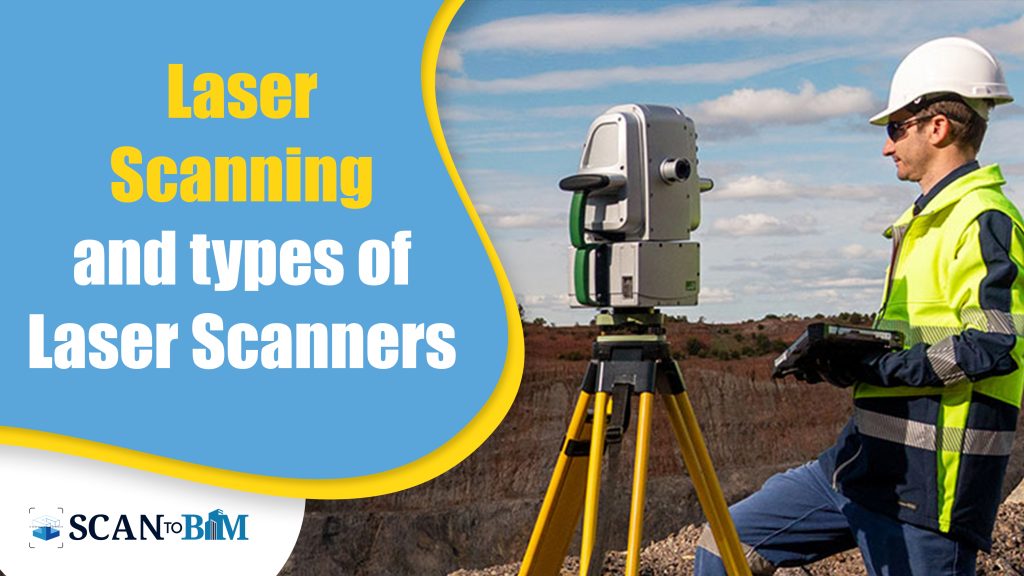
Introduction
The architecture, engineering, and construction (AEC) business has recently experienced substantial technological breakthroughs that have made it possible for operations to be more precise and effective. Laser scanning has changed the game by providing enormous advantages at various phases of the construction lifecycle when paired with Point Cloud to BIM Services. This blog examines the many kinds of laser scanners and their uses, with an emphasis on the role that Scan to BIM businesses have had in using this technology.
Understanding Laser Scanning
A non-invasive surveying technique, laser scanning, sometimes referred to as terrestrial laser scanning or LiDAR (Light Detection and Ranging), collects accurate and in-depth three-dimensional (3D) information regarding real-world items and settings. In order to calculate the range across the scanner as well as the item, laser beams are used, resulting in a point cloud, which is made up of millions of distinct points. These point clouds serve as the basis for creating precise 3D models, which are helpful during multiple stages of building, engineering, and architecture.
Types of Laser Scanners
- Time-of-Flight (ToF) Scanners:
ToF scanners calculate the distance by timing the time it takes a laser pulse to go from an item to the scanner and back. These scanners use brief laser pulse spurts to estimate distance by capturing the light that has been deflected. ToF scanners have a tendency to be utilized for medium- to long-range scanning tasks because of their rapid capabilities to record huge regions. In outdoor settings like topographic mapping and big projects involving infrastructure, they are perfect. - Phase-Shift Scanners:
Continuous laser beams are produced by phase-shift scanners, which measure the phase difference that exists among emitted as well as reflected light to determine ranges. These scanners are great for catching little items and complex features since they produce extremely precise readings. Utilization for phase-shift scanners includes forensic analysis, precise engineering, and the protection of cultural treasures. - Pulse-Based Scanners:
Short laser pulses are emitted by pulse-based scanners, which track the amount of time it takes for the pulse to bounce back after striking an item. These scanners are frequently employed in fields including design, construction, as well as administration of facilities and have the capability of recording data with excellent resolution. Pulse-based scanners may consist of portable, tripod-mounted, mobile scanners placed on vehicles, or drones, among other variations.
Applications of Laser Scanning
- Construction and Design:
The use of laser scanning is essential in the design and building processes. Laser scanners assist designers, engineers, and construction specialists in obtaining precise as-built data by capturing existing buildings and locations. Scan to BIM Company are experts at transforming point cloud data into Building Information Models (BIM), which makes it easier for project stakeholders to collaborate and coordinate precisely. - Asset Management and Facility Maintenance:
The administration of assets and building upkeep both benefit from laser scanning. Point cloud data may be utilized for scanning buildings and infrastructure to develop thorough asset inventories, allowing for effective organizing space, maintenance schedule, and the state of assets evaluation. Facility managers can quickly pinpoint needed repairs and track structural alterations over time, assuring durability along with the security of resources. - Cultural Heritage Preservation:
Laser scanning has shown to be quite useful in attempts to preserve cultural assets. Laser scanners support digital documentation and restoration efforts by recording extremely accurate 3D data of historical places, artifacts, and buildings. Future generations will be able to interact with and value our rich past thanks to the study, virtual reconstruction, and archiving of cultural treasures made possible by point cloud data.
Scan to BIM Services: Leveraging Laser Scanning for BIM
Scan to BIM businesses are experts in turning point cloud data into sophisticated BIM models. These businesses bridge the gap between the real and digital worlds by utilizing laser scanning technology, allowing efficient collaboration and communication in the AEC sector. Companies that offer scan-to-BIM services turn unstructured point clouds of data into comprehensive 3D models that faithfully depict the as-built environment thanks to their skill in laser scanning technology and BIM software. According to an inquiry by Deloitte, projects using laser scanning and Scan to BIM services saw an average reduction in expenses of 20% and a 15% shortening of project schedules.
Conclusion
With its capacity to record precise and thorough point cloud data, laser scanning has revolutionized the AEC sector. The many laser scanner varieties meet a range of scanning needs, allowing experts to gather very precise data for a range of applications. Utilizing laser scanning technology, scan-to-BIM companies streamline the design, construction, and facility management processes by converting point cloud data into intelligent BIM models. The industry is moving towards a more profitable and environmentally friendly future thanks to the acceptance of laser scanning and Scan to BIM services, which results in cost savings, shortened project durations, increased accuracy, and greater cooperation.